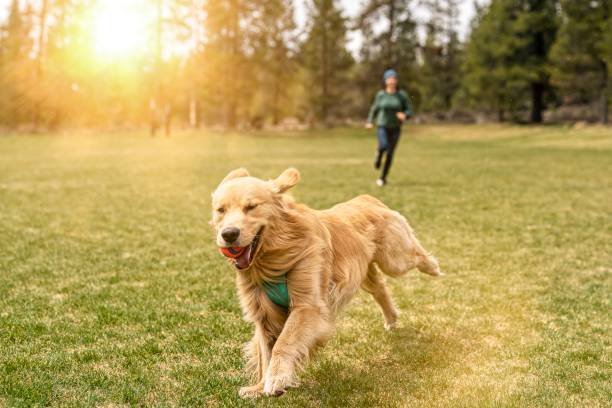
If you love dogs and running, you might like getting an athletic companion. Running with a dog can be fun and a great way to bond with your pet.
Many of the best athletic canines are part of the sporting, herding, or terrier dog groups. Most breeds have been developed over generations for their athleticism and endurance. Some mixed-breed dogs are also great runners, especially if mixed with one or more of these athletic breeds.
Here are the ten best dog breeds that tend to enjoy frequent runs.
Weimaraner

As members of the sporting group, Weimaraners are designed to be athletic. Known for their sleek appearance and athletic build, Weimaraners have great speed and endurance, making them ideal running partners for short and long distances. They also enjoy lots of exercise, and Weimaraners who do not get enough exercise and training may even develop anxiety or behavioural issues, such as destructive behaviours.
Breed Overview
Group: Sporting Group
Weight: 70 to 85 pounds
Height: 24 to 26 inches
Coat and colour: Sleek, streamlined stature with a short, smooth, mouse-grey or silver-grey coat.
Life span: 11 to 13 years
Vizsla
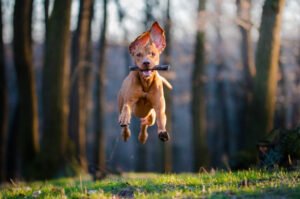
Some people nickname the Vishsla “the Velcro dog.” This hard-working hunting dog thrives on exercise. Recognised for its prowess as a fantastic group sporting dog, Vishslas are known for their exceptional endurance and speed. This breed is a great loyal companion and running buddy.
Breed Overview
Group: Sporting Group
Weight: 45 to 50 pounds
Height: 22 to 23 inches
Coat and colour: Russet-colored shorts with a smooth, dense coat
Life span: 12 to 14 years
Dalmatian
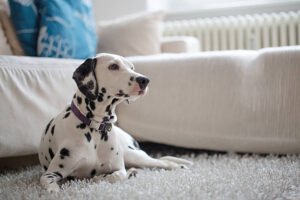
The history of this breed is not well-known, but Dalmatians need to stay active and busy. They were once used as carriage or coach dogs running alongside horse-drawn carriages. They are also famous as firehouse dogs. Although they are in the non-sporting group, Dalmatians are natural athletes who still need lots of exercise to thrive.
Breed Overview
Group: Non-Sporting Group
Weight: 45 to 60 pounds
Height: 19 to 23 inches
Coat and colour: Short and dense, with a white coat and a patch of brown or black spots.
Life span: 11 to 13 years
Border Collie

The Border Collie is one of the smartest dog breed globally. As a member of the herding group, I know this breed loves to move and be put to work. Border collies are incredibly agile dogs, capable of sustained high-speed running. Try running with your border collie on dense, winding trails for an added challenge. Although they can tolerate heat, they do exceptionally well in cooler temperatures. These dogs need to keep active, or they can become frustrated.
Breed Overview
Group: Herding group
Weight: 28 to 48 pounds
Height: 18 to 22 inches
Coat and colour: A rough or smooth medium-length double coat with a coarse outer layer and a soft undercoat is available in solid colours, bicolour, tricolour, merle, or sable patterns.
Life span: 10 to 17 years
Australian Shepherd

One of the most intelligent dog breeds on our list is the Australian Shepherd. This agile and athletic Aussie enjoys long and challenging runs. This breed craves both mental and physical stimulation. Aussies are intelligent, loyal, and energetic, making them great companions and running partners.
Breed Overview
Group: Herding group
Weight: 40 to 65 pounds
Height: 18 to 23 inches
Coat and colour: Medium to long coat available in blue merle, red merle, black, or red.
Life span: 13 to 15 years
Rhodesian Ridgeback

They are known as the king of Africa. The Rhodesian ridgeback is a member of the hound group but often seems more like a sporting dog as their body structure is slightly sleek. Hailing from Africa, the Rhodesian Ridgeback is a formidable, muscular breed originally bred for hunting lions. Known for their athleticism and endurance, these dogs are well-equipped for long runs and warmer temperatures.
Breed Overview
Group: Hound group
Height: 25 to 26 inches
Weight: 65 to 90 pounds
Coat and colour: Light wheaten to red wheaten with a characteristic ridge of hair at the bark, formed by the hair growing in the opposite direction of the rest of the coat
Life span: 10 to 12 years
Siberian Husky
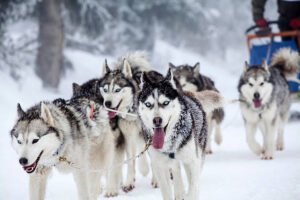
The Siberian husky belongs to the working group and was originally bred for pulling sleds over long distances in the snow. This breed exhibits seemingly boundless energy and enjoys running. This dog can be your daily running partner, especially if you live in a cool climate, as huskies are not suited for long runs in warmer weather.
Breed Overview
Group: Working group
Weight: 35 to 50 pounds
Height: 21 to 23 inches
Coat and colour: Dense, plush double coat ranging from black to white and other colours; brown or blue eyes
Lifespan: 12 to 15 years
Terriers
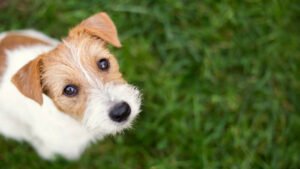
Several small and energetic terriers enjoy long runs. These breeds are tenacious and can endure; they were bred to join fox hunts. If you are an apartment dweller considering getting a smaller dog as your running partner, consider a Jack Russell, a Parson Russell, a rat terrier, or a wire fox terrier. Consider an Airedale terrier if you prefer to run with a larger terrier.
Pointers

Known to be excellent sprinters, several pointers love to exercise. These dogs are strong, fast, and can keep going for a long time, so they make great running companions. Some examples of these breeds are the pointer, German shorthaired pointer, and German wirehaired pointer. These dogs do well in warm and cool temperatures and enjoy long-distance runs.
Sighthounds
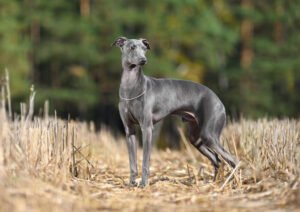
If you like shorter, fast-paced runs, a sighthound—the greyhound, whippet, borzoi, Saluki, Scottish deerhound, and solution—may be your perfect running companion. Their sleek bodies are built for running fast, and they really enjoy it. However, most sighthounds are ultimately more like couch potatoes than athletes.
Things To Watch Out For
- It’s important to note that young puppies of all breeds should not be taken on regular, routine runs or long runs. Generally, it would be best not to start running with a puppy before six months of age, any earlier, and you could risk affecting its growing joints and muscles.
- Many high-energy dogs, such as boxers or pit bulls, can make excellent running partners but do not tolerate frequent runs well.
- It’s important to avoid engaging in long-distance runs with dogs that have short snouts, like bulldogs, pugs, or other breeds that are particularly sensitive to heat, because these dogs can get very tired, too hot, and have trouble breathing.
- Giant or other dogs prone to orthopaedic problems can experience joint pain and injuries if they frequently run long distances.
- Small, short-legged dogs like dachshunds or corgis may have trouble keeping up and quickly tire on long runs.
Leave a Reply